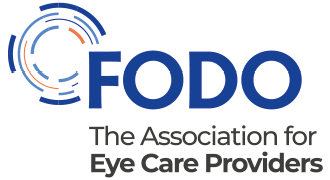01 June 2020
Member update: New Covid-19 guidance and updates on furlough and SEISS
Update includes:
- Updated: Covid-19 framework for primary eye care providers - version 2
- New: Staff management - test and trace
- New: CJRS and self-employment income support scheme
- Other sector news
1. Covid-19 framework for primary eye care providers - version 2
As planned, we reviewed our Covid-19 guidance on 30 May and have made some updates:
To save you time, if you already have implemented version 1 then use this version which highlights what has changed.
The main changes are:
- Clarification on ventilation systems (page 8)
- Converting annexes into standalone resources - to help users find what they need
- Adding the College of Optometrists' 29 May guidance
- Updating hyperlinks to reflect the above changes.
You can, therefore, now access the following resources separately:
- A flow diagram that staff can use for a daily self-assessment
- A seven-step guide to ensuring compliance with standard precautions
- Standard precautions poster
- Clinical prioritisation at a glance - RAG model
- Cleaning and disinfecting at a glance
- PPE at a glance
- Risk assessment template
- Patients - screening questions
- Additional considerations for face-to-face care.
You can also access free resources such as posters, videos and training from trusted sources, recommended reads and updates at our Covid-19 resource hub.
If we could be doing anything more to support you, please get in touch in the usual way by emailing [email protected].
If you have any further suggestions on how we can improve our guidance and support, please complete this short survey.
2. New: Staff management - Test and Trace (England)
The Department of Health and Social Care (DHSC) has published NHS test and trace: how it works guidance.
The DHSC directs all health and care workers to Public Health England (PHE) guidance. PHE updated this guidance on 31 May and it now includes how to respond to test and trace notifications and what to do in the event of a PPE breach.
It advises that all staff should self-isolate in line with official guidance and also:
- If the employee develops symptoms at work, they should put on a surgical face mask immediately, inform their manager and return home. They should then comply with all requests for testing. It explains that testing is most sensitive within three days of developing symptoms
- If NHS Test and Trace or another national system - i.e. Northern Ireland, Scotland or Wales - has notified staff of their contact with a Covid-19 case outside a healthcare setting, they should self-isolate for 14 days in line with test and trace guidance
- Section 4.4. sets out how to identify and manage a potential ‘PPE breach'.
The guidance also covers a range of other situations, and we recommend all members in England read the full guidance.
Essential workers and employers are advised to access test via the following routines:
The general public is advised to book testing using the NHS website. People without access to the internet are advised to order a test by phoning 119.
3. New: CJRS and self-employment income support scheme
As promised in our member update on Friday, here is an update on the coronavirus job retention scheme (CJRS) and self-employment income support scheme (SEISS).
CJRS
The chancellor has announced three changes to CJRS:
- 30 June: the scheme will close to new entrants from 30 June. From this point onwards, you can only furlough employees who you furloughed for a full three-week period before 30 June. The final date you can furlough an employee for the first time will be 10 June - i.e. if they are to complete the current three-week furlough period by 30 June. You will have until 31 July to make any claims in respect of the period to 30 June.
- From 1 July 2020: you can bring previously furloughed employees back part-time and still receive a grant for the time when they are not working.
For example, if a full-time worker returns two days per week, they will receive full pay from you for those days, and the furlough scheme will fund three days at 80%.
These arrangements must cover at least one week, and you must confirm them in writing to the employee.
You can then report and claim on a weekly basis (minimum) or you can choose a longer period - e.g. two weekly or monthly cycles.
You will need to submit data on the usual hours you'd expect an employee to work in a claim period and the actual hours worked.
- From 1 August 2020: you will have to start contributing to the wage costs of furloughed staff and this contribution will increase in September and October.
This change means the government is tapering CJRS slowly.
- June and July: the government will continue to pay 80% of wages up to a cap of £2,500 and employer National Insurance (ER NICs) and pension contributions for the hours the employee does not work.
August: the government will continue to pay 80% of wages up to a cap of £2,500 for hours the employee does not work. However, you will have to pay ER NICs and pension contributions. You will also pay the full cost of hours worked.
September: the government will pay 70% of wages up to a cap of £2,187.50 for the hours the employee does not work. You will pay ER NICs, pension contributions and 10% of wages to make up 80% of the total up to a cap of £2,500. You will also pay the full cost of hours worked.
- October: the government will pay 60% of wages up to a cap of £1,875 for the hours the employee does not work. You will pay ER NICs, pension contributions and 20% of wages to make up 80% of the total up to a cap of £2,500. You will also pay the full cost of hours worked.
The government does not expect smaller employers who have NIC bills covered by the Employment Allowance to be significantly affected by that part of the tapering.
Please note, HMRC has advised that "If employees are unable to return to work, or employers do not have work for them to do, they can remain on furlough, and the employer can continue to claim the grant for their full hours under the existing rules".
We expect more detailed guidance by 12 June.
We will be writing to practice owners separately with more detailed advice and guidance shortly.
SEISS
On Friday, 29 May, the chancellor also confirmed the extension of SEISS. Eligible self-employed people will be able to claim a second and final SEISS grant in August.
The grant will be a taxable and worth 70% of the average monthly trading profits for three months. It will be paid out in a single instalment and capped at £6,570 in total.
The eligibility criteria for the second grant will be the same as for the first grant.
Please note:
- Claims for the first SEISS grant, which opened on 13 May, must be made no later than 13 July
- If you did not claim the first grant, for example, because your business was not adversely affected by Covid-19, but are eligible and want to claim a second SEISS grant you can do so
- You must claim yourself. HMRC says that if you advise an agent to claim on your behalf, it "will trigger a fraud alert and will result in significant delays to payment". However, you can still seek help from your accountant, for example, in preparing the information you need to claim.
We expect more information about the second SEISS grant by 12 June.
4. Other sector news
LOCSU has asked practices in England to complete a form reporting total urgent eyecare activity this week, starting 1 June. Take part by completing the urgent care activity form.
PCSE has confirmed it will be making payments to contractors that have remained open throughout the pandemic - as per NHSEI's 1 April letter and OFNC FAQs. It confirms contractors will receive a monthly payment based on the average monthly reimbursement to the practice generated from GOS fees during the period March 2019 to February 2020. It advises that you should continue to submit all GOS claims as normal because cut-off dates have not changed. Read more.
Eye care professionals in Northern Ireland have set up a drive-through IOP clinic to monitor glaucoma patients during the pandemic. Read more.

Stay up to date
Subscribe to
our newsletter
Get eye sector updates directly to your email inbox by signing up to our newsletter.
You can inform us at any time if you'd like us to stop sending you these communications.
Press enquiries
Media enquiries should be directed to [email protected] or call 020 7298 5151.
We are happy to put you in touch with our expert policy advisers who can comment on a variety of issues.

 Patients and public
Patients and public
 Policymakers
Policymakers Members
Members News and views
News and views
